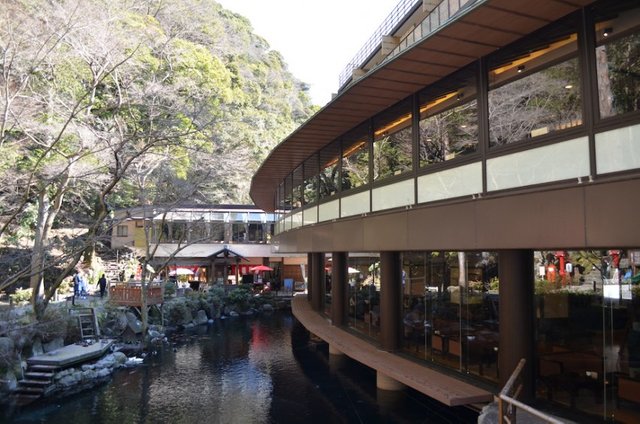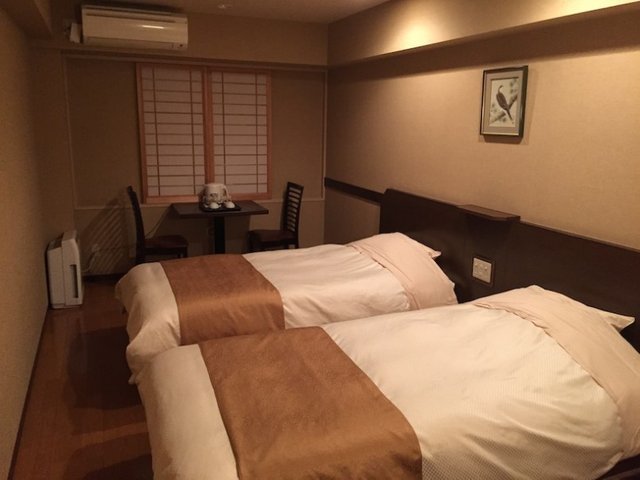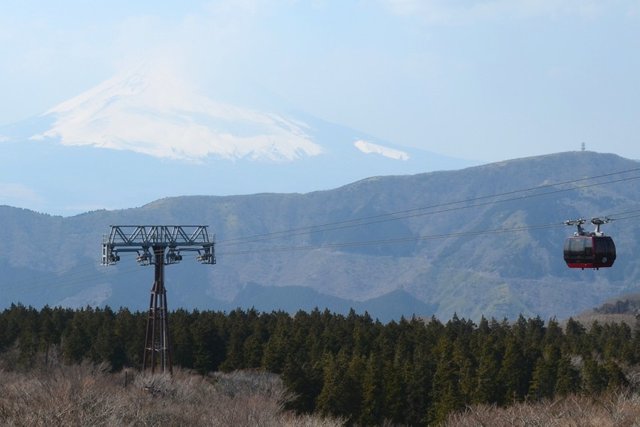The Ultimate Guide to Experiencing Hakone
Welcome to Japan! You’re probably excited to begin planning your journey to this famous island nation, and you should be. Japan is home to some of Asia’s most delicious foods, oldest temples, and always provides amazing cultural experiences. Located in one of the most active volcanic regions in the world, Japan is also famous for its onsens (hot springs). If you’re interested in viewing Mt. Fuji, Japan’s iconic volcano, and soaking in some soothing waters, Hakone is a must visit destination and this guide is going to give you the inside knowledge to help you plan it.
If your coming from Tokyo, your first stop should be the Odakyu Sightseeing Service Center located on the Ground Floor of the Odakyu Department Store inside the Shinjuku Train Station. This office sells the Hakone Freepass, which is the most convenient, affordable way for tourists to experience Hakone.Two-day passes are available for 5,140 yen for adults (1,500 yen for children) while the three-day pass is only slightly more at 5,640 yen (1,750 yen for children). There is a lot to experience in Hakone and since the additional day is only 500 yen more, do yourself a favor and purchase the three-day pass.
Ticket holders of the Hakone Freepass enjoy unlimited access to all the transportation options within the Hakone region, including the round-trip journey from Tokyo’s Shinjuku train station. Ticket holders also enjoy free admission and discounts into several Hakone attractions making this pass a definite money saver.
From Shinjuku Station, passengers board the Odakyu Train bound for Odawara Station. The journey takes exactly 100 minutes and after arriving at the station, passengers need to change trains and ride an additional 15 minutes before arriving at the main terminal of Hakone-Yumoto.For those wanting an easier travel experience, you can upgrade and book a seat on the “Limited Express Romance Car”. This train offers wider and more comfortable seats and goes directly to the Hakone-Yumoto terminal. In total the journey takes only 85 minutes from Shinjuku. Ticket holders of the Hakone Freepass can choose this option for an additional 680 yen.When you arrive at the Hakone-Yumoto Station, you will be at the center of Hakone, ready to explore all the sights. Any hotel near Hakone-Yumoto Station makes a great place to stay, as there are many restaurants and transportation services available. Just make sure you book a room in advance. Hakone is an extremely popular tourist destination and it’s not uncommon for many hotels to be completely sold out (especially during weekends and holidays).
When selecting a hotel, make sure you pick one with a great hot spring experience. This of course is the main reason you are traveling to Hakone, and the hotel’s quality of its hot springs can make or break your visit. Here are some tips to help you select a good one:Each hotel in Hakone offers guests a chance to soak in the natural hot spring water of a public bathing complex located within the hotel. In Hakone, men and women bathe separately as it is customary to bathe without clothing. In most of the hotels, the onsens are available 23 hours a day, closing for one hour in the morning for cleaning.
Depending on your hotel, your onsen could be located indoors or outdoors. For the best experience, find a facility with an outdoor onsen. You’ll have a chance to observe the beautiful surroundings, and if you’re traveling here during the winter, a cold, snowy environment adds to the experience of soaking in the hot steamy waters. Also since the onsen is open throughout the night, come for a midnight soak and observe the beautiful star filled skies. It’s a great way to relax before bed.
Spending a few nights in Hakone is a great chance to experience local Japanese hotels. Don’t be too concerned with the luxury of your room, the true highlight of any Hakone hotel is the onsen experience. Most hotels off offer simple, but comfortable accomodation. Here are some additional fun facts to know beforehand:In many hotels, shoe lockers are available at the main entrance of the hotel. All guests take their shoes off upon entering and store them inside the locker, making the entire hotel, a shoe-free environment. Additionally guests are given a Yukata (Japanese robe) that can be worn throughout the hotel and bathing rooms. It’s common to see hotel guests wearing the robes around the hotel, even at meal times.
Transportation in Hakone
With the three-day unlimited Hakone Freepass you’ll have access to every method of transportation in the area and that’s a good thing, as there are variety of ways to get around. The most popular route for tourists is starting in Hakone-Yumoto Station and making one giant circle around the various attractions. One route is to take the train to Gora, followed by the cablecar to Sounzan, the ropeway to Togendai, the sightseeing cruise to Hakone Machi, and finally catching a bus back to Hakone-Yumoto Station. Sound exhausting? Don’t worry, there are plenty of activities to see and do along the way, making this famous loop a whole day’s worth of activity.
Hakone Ropeway – With unrestricted views of Japan’s famous Mt. Fuji in the background, it easy to see how the Hakone Ropeway won the Guinness Book of World Records Award for the world’s busiest gondola ride. Want the best seat to view Mt. Fuji? Take the ropeway from Owakudani Station heading west towards Ubako Station and sit in the front, right part the car for a perfect view!
Sightseeing Cruise – A fleet of 5 decorative pirate ships add some adventure for the little ones in the family as these boats travel between the North and South ports of the Lake Ashi. The trip takes only 30 minutes to travel the approximate 10 kilometers between ports, but offers some of the best photo taking spots in Hakone. Do yourself a favor and upgrade to the “first class” ticket before boarding.
The upgrade only costs 400 yen but gives you VIP access to the comfortable first class leather couches and the ship’s front half of the boat. The majority of tourists do not know about this service and you cannot upgrade once you’ve boarded the ship. This upgrade might just be the best 400 yen you spend in Japan, and an absolute must when taking this ship.
Tozan Cablecar - A funicular railway traveling between Gora and Sounzan. This journey takes only 10 minutes between stations and covers a distance of 1.2 kilometers. The train travels at an almost 45 degree angle up the slope of a mountain, making this one of Hakone’s most unique methods of getting around.
Activities in Hakone
From parks to museums, miniature golf to outlet shopping, there are a large variety of activities to keep every type of traveler entertained. Here are some options worth visiting:Owakudani Station – An active sulfur mine makes this station a unique place to visit. The gift shop sells the popular boiled Owakudani “Black Egg” which is said to add 7 years to your life upon consumption. The shells of the egg turn black when boiled, due to a chemical reaction with the minerals in the water. This station also has some amazing views of Mt. Fuji and probably the best spot for a group photo with the mountain.
The Hakone Craft House – Located directly inside Gora Park, the craft house offers guests a chance to become an artist and complete one of their glass blowing or pottery wheel classes. Classes are available in English and cost between 2,000-4,000 yen per session depending on the type of glass or ceramic object you would like to construct.
Gora Park – Entrance to the park is 550 yen for adults but complimentary for Hakone Freepass ticket holders. Walk through the park’s impressive rose garden and make sure you visit the garden’s several greenhouses. Protected from extreme weather, these greenhouse house an impressive collection of bougainvilleas and also a tropical rainforest complete with palm trees, birds of paradise flowers, and even pineapple plants.
Additional Tips to Help Plan Your Holiday:
- Stay patient - Many of the signs are in Japanese and can be very intimidating for Western tourists. While most times there are English translations, make sure you have an English copy of the Hakone map (available at the Odakyu Sightseeing Service Center). Study the map beforehand and plan your journey. It’s not too hard and you’ll be feeling confident in no time!
- Be prepared to wait - The Hakone region is large and has become incredibly popular with tourists from other Asian countries. Sometimes buses and trains are packed to maximum capacity, making the journeys very difficult for families with small children. Avoid traveling at sunset, when most people are trying to get back to their hotels after a busy day of sightseeing.
- Know the express routes - If you find yourself at either one of the Southern ports of Lake Ashi and want to return to the Hakone-Yumoto Station, make sure you take the purple line “R” bus. Many tourists make the mistake of taking the red line “H” bus. The “R” bus is an express service taking only 30 minutes, while the “H” line takes 2 hours.
- Don’t do too much! Sometimes tourists come to Hakone and spend all their time on buses, trains, cable cars, and ships only to feel exhausted at the end of the day. Remember you are coming to Hakone to relax and experience the Japanese onsen! Pick a few things to do, but leave plenty of time to enjoy the hot spring at your hotel. If you purchase the 3-day Hakone Freepass, that extra day will come in handy and you can enjoy more time soaking away in the natural hot springs!
- Purchase some unique gifts – Two of the popular snacks to enjoy at Hakone are the black eggs at Owakudani and the region specific “Mt. Fuji Strawberry Cheesecake KitKat bars. Eat the eggs with your family and bring the KitKats home for a unique gift for your friends.
Thanks for reading!
Credit to: Source
















Another amazing article! In love with Japan! Hope that I can get there next year for a vacation!